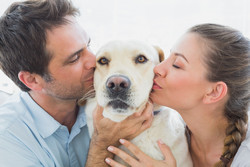Companion animals and the spread of disease
These so-called zoonoses can be caused by viruses, bacteria, fungi or parasites and transmitted through physical injuries, direct contact, and ingestion of contaminated food or water. In addition to the public health and occupational health risks to CA owners and veterinarians, food animals are also at risk of infection by pathogens from CA species. The EU-funded CALLISTO (Companion animals multisectorial interprofessional and interdisciplinary strategic think tank on zoonoses) project explored the risks of zoonotic infectious diseases associated with CAs. The project network comprised European and international experts involved in research activities in the field and coordinated by the Federation of Veterinarians of Europe (FVE). CALLISTO's aim was to reduce the risks associated with the close integration of CAs into human society and to increase the real benefits of healthy human-animal relationships. Researchers conducted risk analysis and modelling and a review of existing risk assessments of the transmission of disease from CAs to humans and farm animals. Implementation of the project's recommendations will give a clearer picture of the numbers and species of animals kept. Identifying CAs with a microchip and putting the data in an accessible system will provide valuable information and allow the identification and tracking of diseases. Project recommendations in the field of education and communication will play a vital role in preventing the spread of infectious diseases by CAs. The promotion of responsible pet ownership will aid risk management and help bring about sustainable changes in pet owner behaviour. Additional recommendations include data collection and pathogen assessment in less studied exotic CAs in order to better understand risk. The spread of disease and the vectors that facilitate it should be monitored and solutions sought. The emergence of antimicrobial resistance in CAs should also be monitored. Development of new tools for the diagnosis, prevention and treatment of specific diseases will help in the prevention and early diagnosis of targeted infections and diseases. The availability of suitable tools will also facilitate disease monitoring and control. CALLISTO will have a beneficial impact on public and animal health and promote risk awareness in healthy and balanced human-animal relationships.
Keywords
Companion animals, infectious diseases, zoonoses, human-animal relationships, microchip

